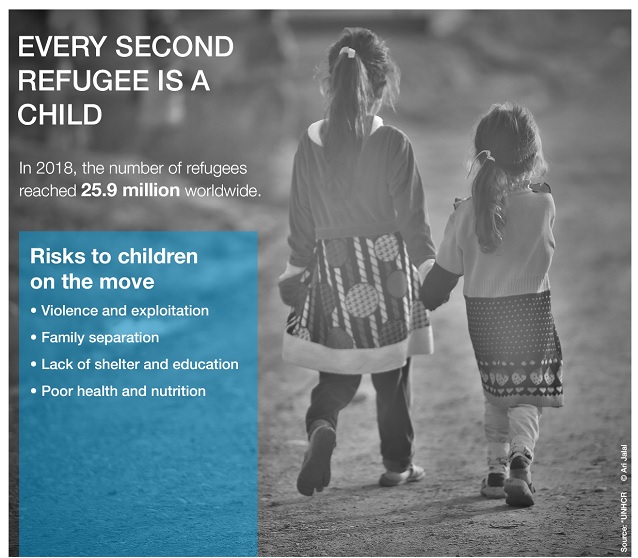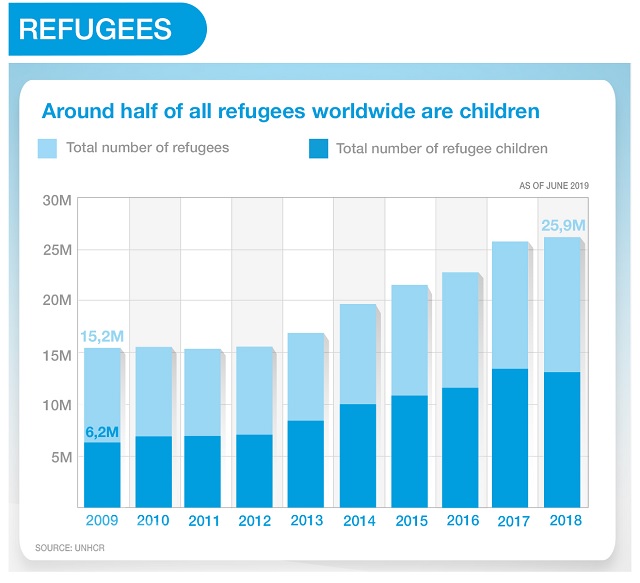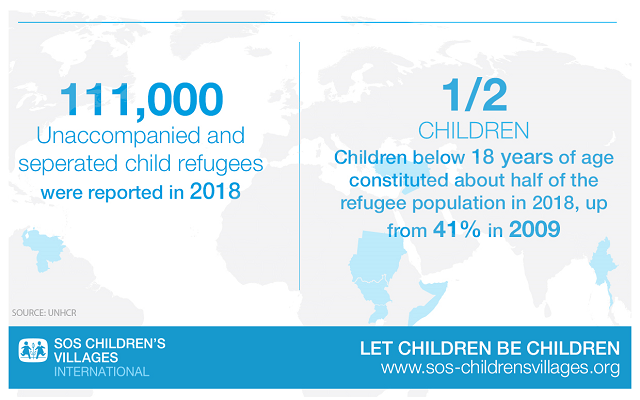World Refugee Day 2019

June 20th is World Refugee Day. As the world continues to struggle with the mass displacement of peoples from places like Syria, Venezuala, Myanmar and more, Norbert Meder, CEO of SOS Children’s Villages International, calls on governments to abide by their obligations to protect refugee children.
“With children accounting for about half of global refugees, governments urgently need to protect refugee children,” says Meder.
The number of refugees reached 25.9 million worldwide in 2018, 500,000 more than in 2017, says the UN Refugee Agency, UNHCR, in its annual Global Trends report. In 2018, every second refugee was a child, and 111,000 of these children were alone and without their families.
“Refugee children continue to be separated from families, held in overcrowded camps without access to adequate education, healthcare, or sanitation, and in some cases are detained,” says Mr Meder. “Children’s rights must never be compromised, regardless of the status of the child.”

Mass displacement has grown at a record-setting pace for years, driven by conflict and social unrest. “In many of today’s displacement crises, children face a disproportionate risk of separation from their families, loss of loved ones, and violence,” Mr Meder says. “Under such circumstances, it is unacceptable that we continue to pursue laws and policies that fail refugee children, further victimising those who have endured experiences that could traumatise them for the rest of their lives.”
The growing destructiveness of natural disasters also contributes to displacement within countries as well as forcing people to seek refuge away from their homeland.
“We are seeing a combination of climate-related disasters and human-made crises drive more people out of their homes. This takes a particular toll on children and families already living on the edge of society,” Mr Meder says. “There are many cases of communities opening their hearts to refugees and people in need. But there needs to be more investment in building resilient communities and strengthening vulnerable families – those often the most exposed to disaster and conflict.”

A milestone in children’s rights
This year marks a significant milestone in the recognition of children’s rights, including those in refugee situations. The Convention on the Rights of the Child (CRC), adopted by the United Nations on 20 November 1989, enshrines in international law the right of every child to be treated with respect, dignity and equality, and to be protected from exploitation, sexual abuse and neglect. It obliges governments to protect and provide for children, and to help them reach their full potential.
“As we mark World Refugee Day, we remind governments of their responsibility under the CRC to treat children with compassion and dignity, regardless of their citizenship or refugee status,” says Mr Meder. “Caring for children means protecting them from harm and ensuring they have a home, school, and the opportunity to grow up with their loved ones whenever possible. These rights are non-negotiable. These are not merely obligations, they are simply the right thing to do.”

Canadians wishing to help vulnerable children are encouraged to sponsor a child, sponsor a Village or make a one-time donation. Your support will help transform the lives of the most vulnerable.
